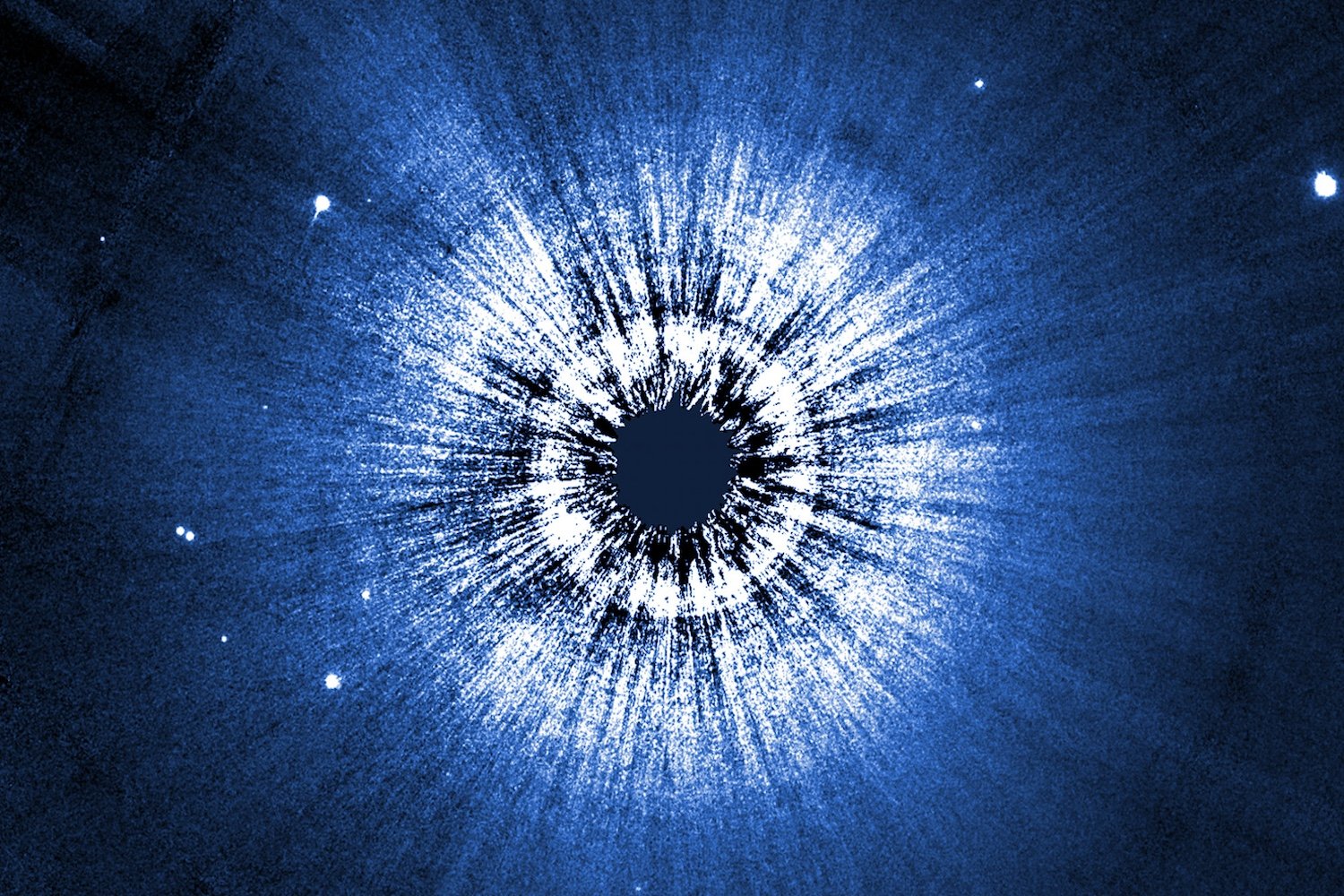In 1984, astronomers discovered a rotating disk of gas and dust around the star Vega, offering the first look at the material from which planets could potentially form. However, recent observations of the same star have revealed a puzzling finding: despite the presence of a large planet-forming disk, no planets are visible.
A team of researchers from the University of Arizona, using NASA’s Hubble and Webb space telescopes, conducted a detailed study of Vega’s disk and found that it is strikingly smooth. Unlike other similar systems, Vega’s disk shows no evidence of large planets, raising intriguing questions for astronomers.
Vega, located just 25 light years from Earth in the constellation Lyra, is one of the brightest stars in the sky, easily visible in the Northern Hemisphere during the summer months. In the 1980s, NASA’s Infrared Astronomical Satellite detected excess infrared radiation coming from Vega, which indicated the presence of warm dust around the star—an early sign of planet-forming materials.
This discovery helped position Vega as a key example in the study of circumstellar disks, the regions where planets are born. The star’s fame was further cemented when it appeared in the 1997 film *Contact*, where the lead character searches for signs of extraterrestrial life and finds no planets in the surrounding debris, an accurate portrayal of the star’s real-life characteristics.
Recent observations have expanded on this early work and provided even more surprising results. The team of astronomers used the Hubble and Webb telescopes to examine Vega’s disk in unprecedented detail. Webb’s infrared images captured the glow of small dust particles, while Hubble detected reflected light from the outer regions of the disk.

The team found that the particles are remarkably small—around the size of sand grains—and that they are distributed evenly throughout the disk, without any signs of larger planets. This uniform distribution is unusual and stands out when compared to other planetary systems.
Vega’s disk is quite different from our own solar system, where the presence of large planets such as Jupiter and Saturn prevents the spread of dust and debris. In our system, these giant planets help to shape the debris and keep it concentrated in certain areas.
In contrast, Vega’s lack of any detectable large planets allows the dust to spread more evenly across the disk. This difference suggests that the dynamics of Vega’s system may not follow the same processes as those in our own solar system, offering a unique perspective on how planets might form around other stars.
The absence of planets around Vega challenges existing models of planet formation. Most circumstellar disks show evidence of planet development, but Vega’s disk remains devoid of such features, prompting scientists to reconsider the variety of planetary systems that exist in the universe.
The detailed observations of Vega may not only provide clues about this specific star system but could also help refine our understanding of how planetary systems form in general. Vega’s case highlights the complexity and diversity of planet formation, suggesting that there is still much to learn about how planets come into being in different environments across the cosmos.

